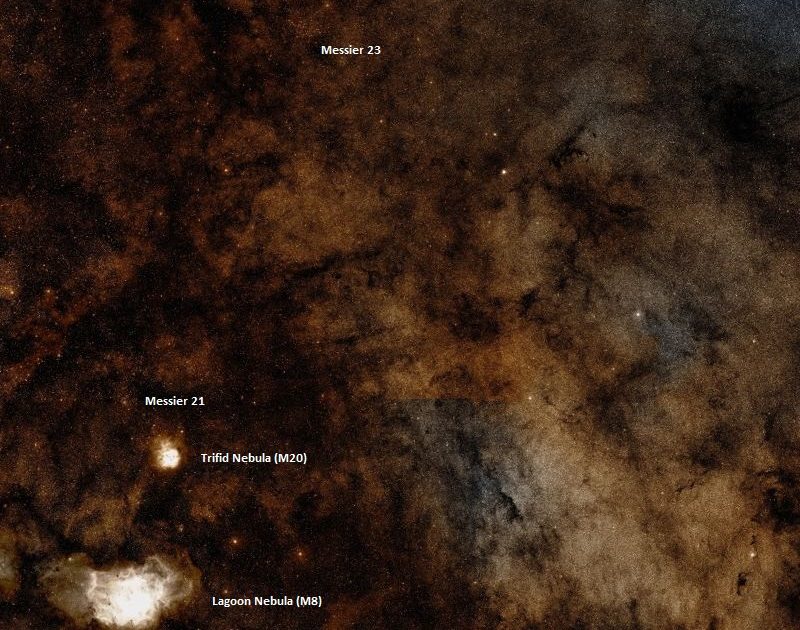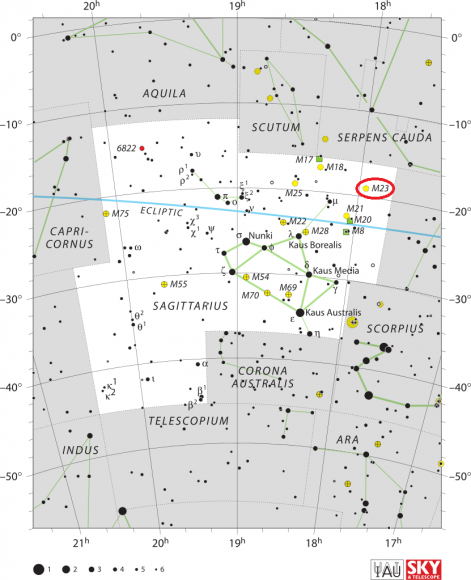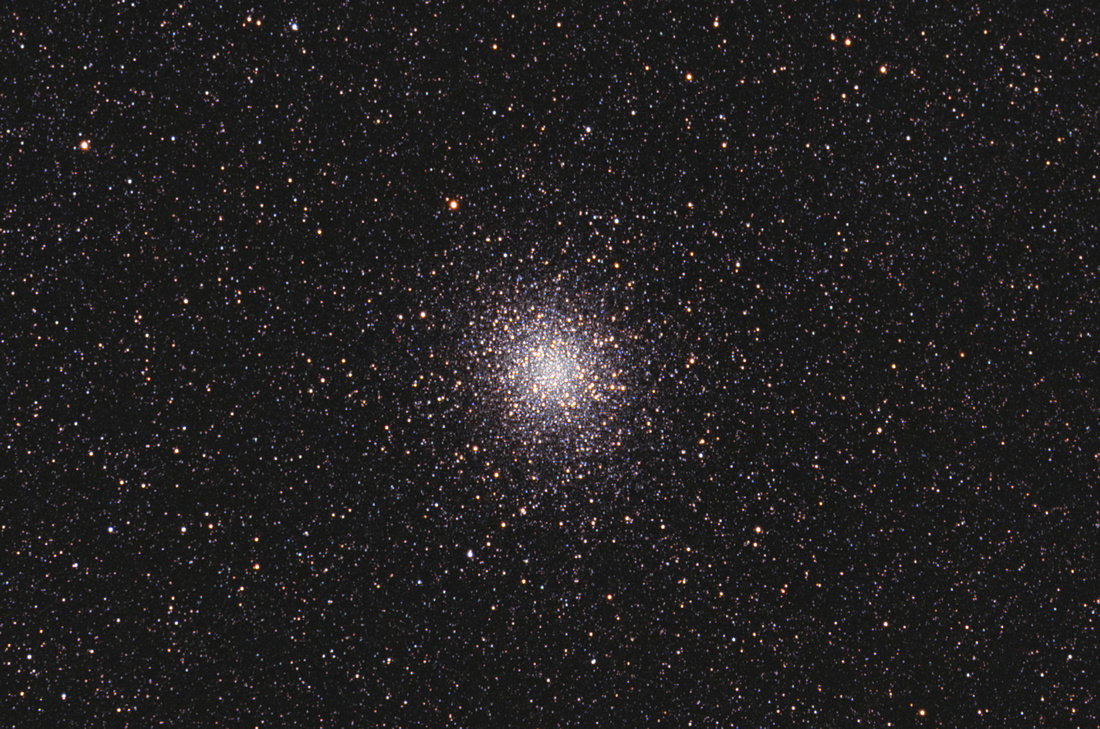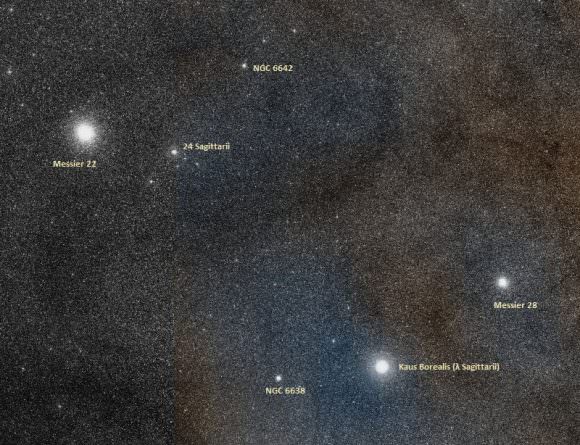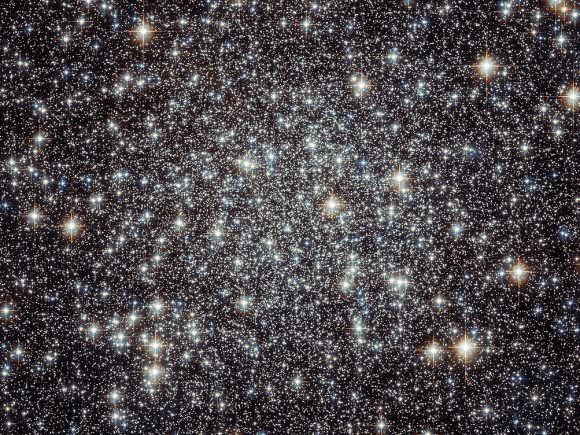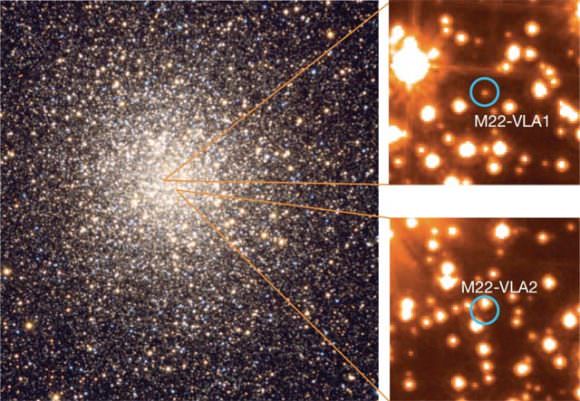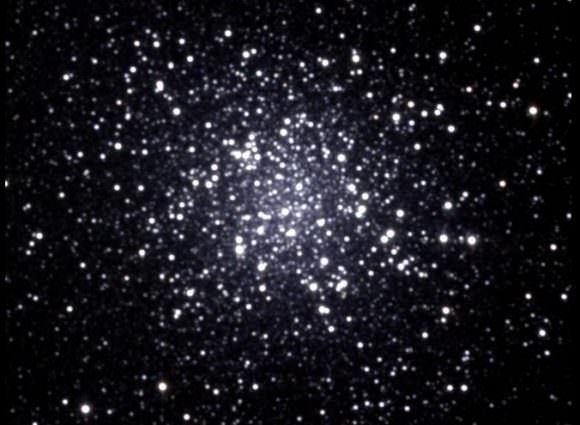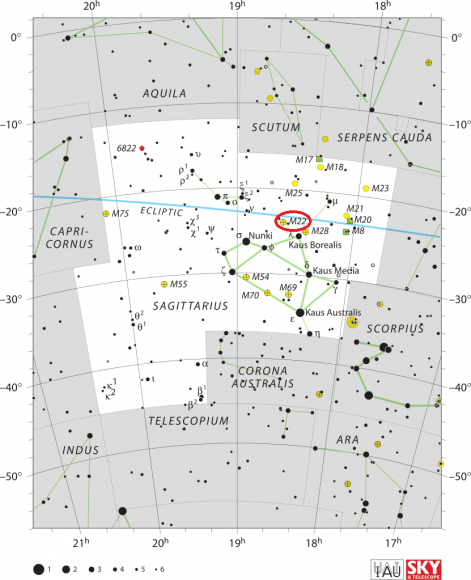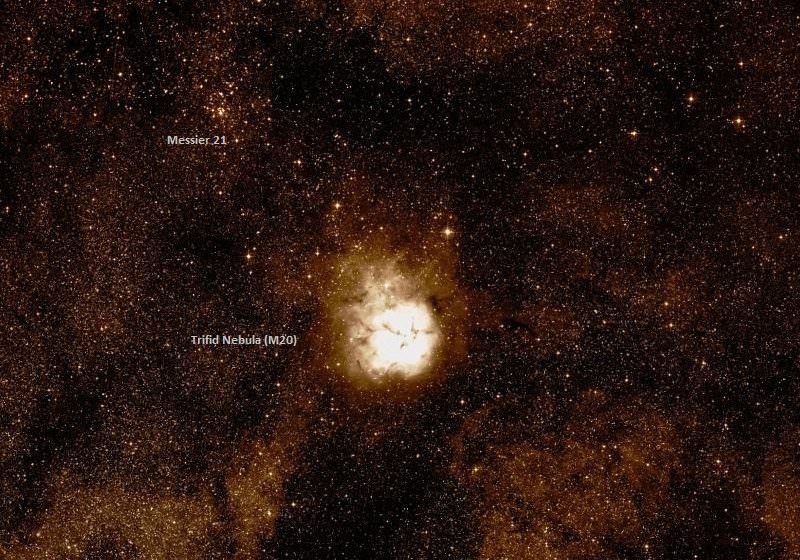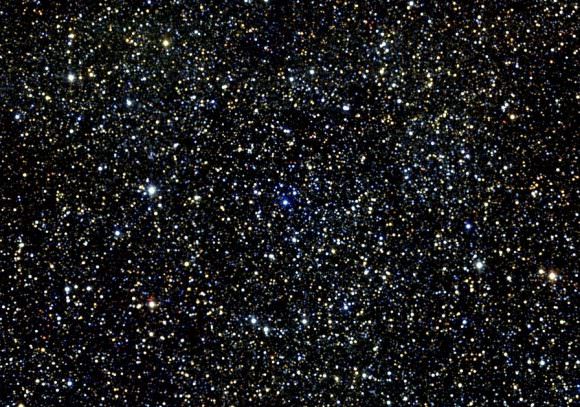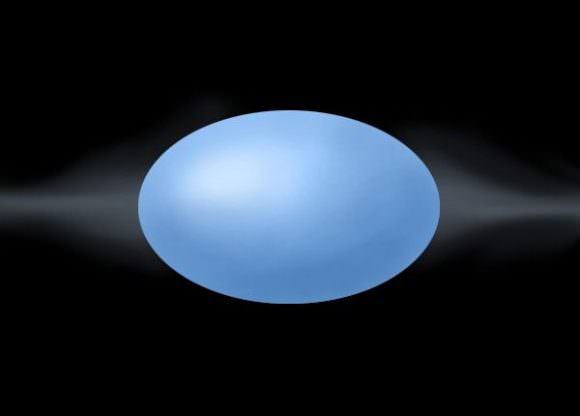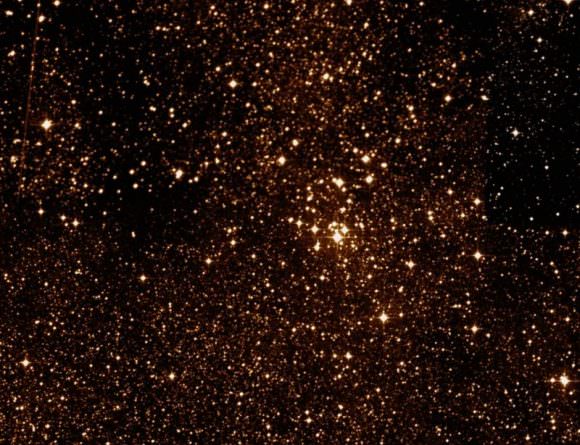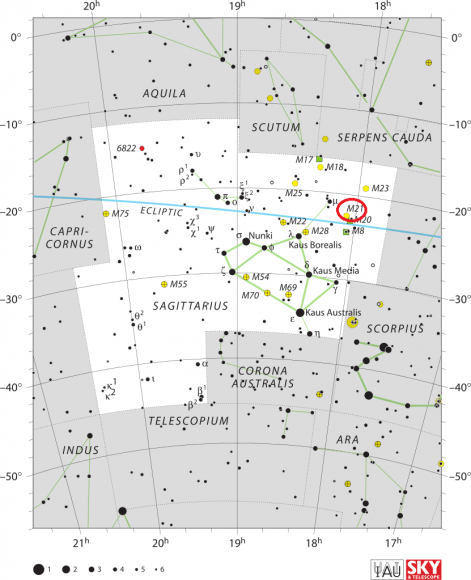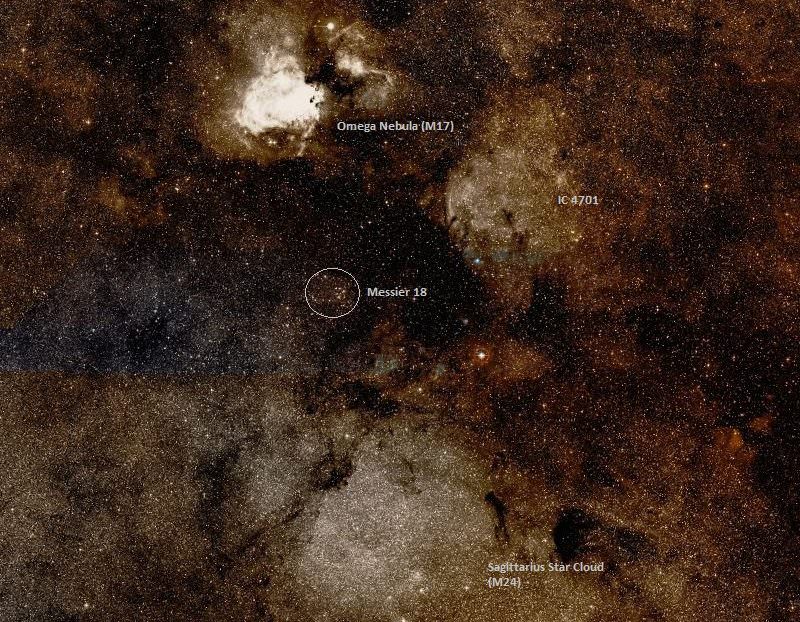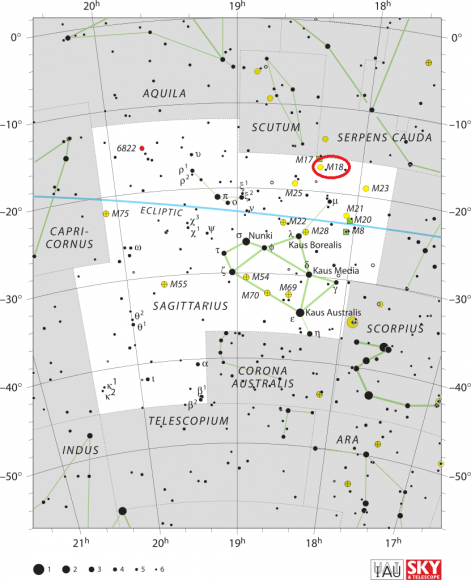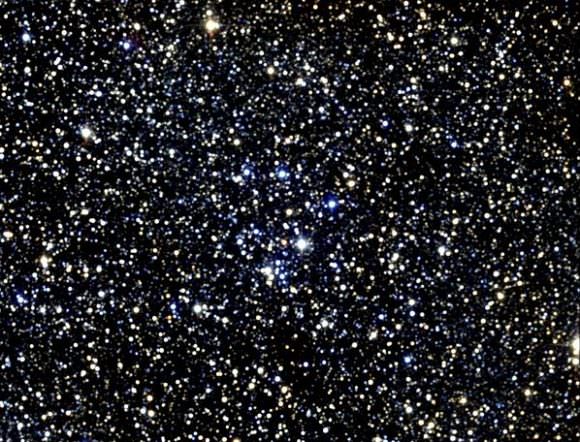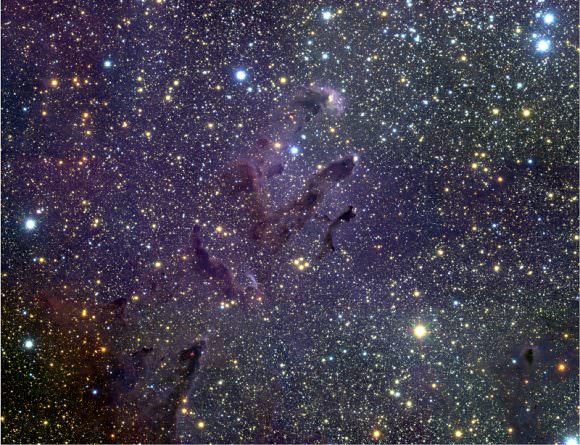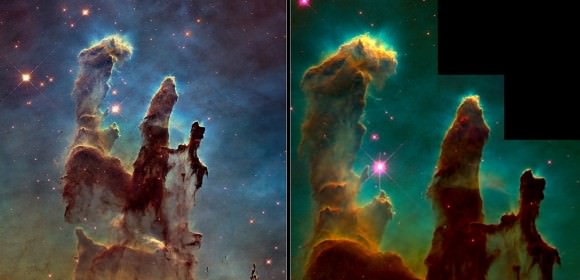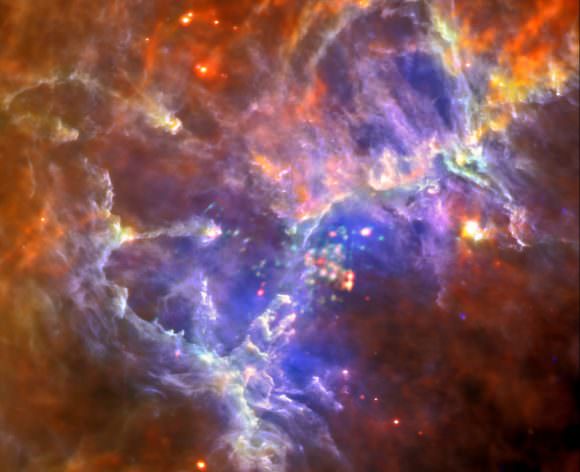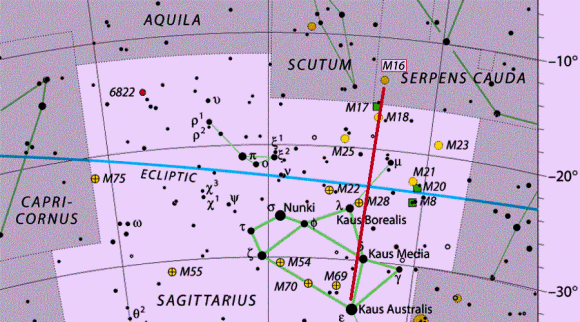Welcome back to Messier Monday! In our ongoing tribute to the great Tammy Plotner, we take a look at the Messier 23 open star cluster. Enjoy!
Back in the 18th century, famed French astronomer Charles Messier noted the presence of several “nebulous objects” in the night sky. Having originally mistaken them for comets, he began compiling a list of these objects so that other astronomers wouldn’t make the same mistake. Consisting of 100 objects, the Messier Catalog has come to be viewed as a major milestone in the study of Deep Space Objects.
One of these objects is Messier 23 (aka. NGC 6494), a large open star cluster that is located in the constellation Sagittarius. Given its luminosity, it can be found quite easily in the rich star fields of the summer Milky Way using small telescopes and even binoculars.
Description:
Located some 2,150 light years (659 Parsecs) away from Earth, this vast cloud of 176 confirmed stars stretches across 15 to 20 light years of space. At an estimated 220 to 300 million years old, Messier 23 is on the “senior citizen” list of galactic open clusters in our galaxy. At this age, its hottest stars reach spectral type B9, and it even contains a few blue straggler candidates.
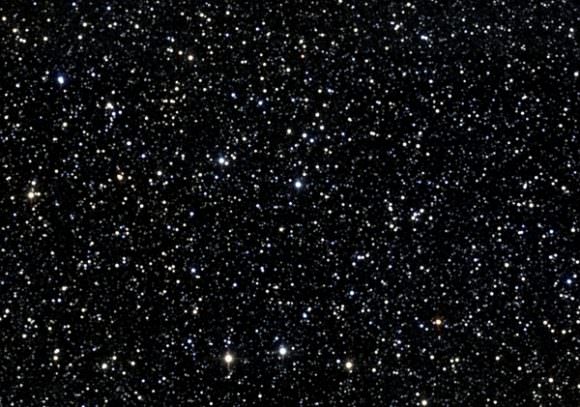
Given that M23 has spent many centuries sweeping through the interstellar medium, astronomers have wondered how this would affect its metal content. Using UBV photometry, astronauts examined the metallicity of M23, and determined that it had no discernible effect. As W.L. Sanders wrote of the cluster in 1990:
“UBV photometric observations of 176 stars in the galactic cluster NGC 6494 are presented and analyzed. The effect of a gas poor environment on the metal abundance of NGC 6494 is studied. It is determined that the metallicity of NGC 6494, which has a delta(U – B) value = + 0.02, is not affected by the interarm region in which it dwelled.”
At the same time, astronomers have discovered that some of M23’s older stars – the red giants – are suffering mass loss. As G. Barbaro (et al.) of the Istituto di Fisica dell’Universita put it in 1969:
“A statistical research on evolved stars beyond hydrogen exhaustion is performed by comparing the H-R diagrams of about 60 open clusters with a set of isochronous curves without mass loss derived from Iben’s evolutionary tracks and time scales for Population I stars. Interpreting the difference in magnitude between the theoretical positions thus calculated and the observed ones as due to mass loss, when negative, the results indicate that this loss may be conspicuous only for very massive and red stars. However, a comparison with an analogous work of Lindoff reveals that the uncertainties connected with the bolometric and color corrections may invalidate by a large amount the conclusions which might be drawn from such research.”
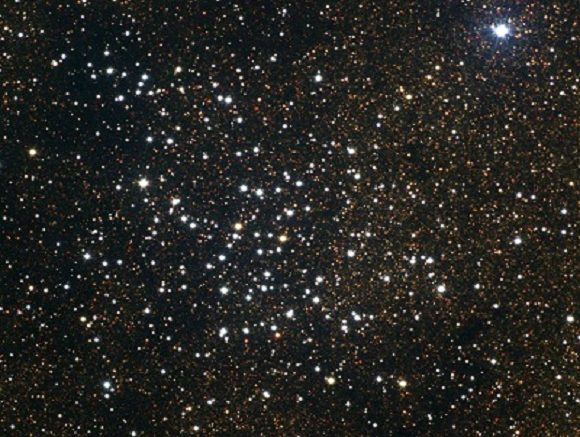
However, the most recent studies show that we have to determine radial velocities before we can really associate red giants as being cluster members. J.C. Mermilliod of Laboratoire d’Astrophysique de l’Ecole wrote in his 2008 study, “Red giants in open clusters“:
“The present material, combined with recent absolute proper motions, will permit various investigation of the galactic distribution and space motions of a large sample of open clusters. However, the distance estimates still remain the weakest part of the necessary data. This paper is the last one in this series devoted to the study of red giants in open clusters based on radial velocities obtained with the CORAVEL instruments.”
History of Observation:
This neat and tidy galactic star cluster was one of the original discoveries of Charles Messier. As he recorded of the cluster when first viewing it, which occurred on June 20th, 1764:
“In the night of June 20 to 21, 1764, I determined the position of a cluster of small stars which is situated between the northern extremity of the bow of Sagittarius and the right foot of Ophiuchus, very close to the star of sixth magnitude, the sixty-fifth of the latter constellation [Oph], after the catalog of Flamsteed: These stars are very close to each other; there is none which one can see easily with an ordinary refractor of 3 feet and a half, and which was taken for these small stars. The diameter of all is about 15 minutes of arc. I have determined its position by comparing the middle with the star Mu Sagittarii: I have found its right ascension of 265d 42′ 50″, and its declination of 18d 45′ 55″, south.”
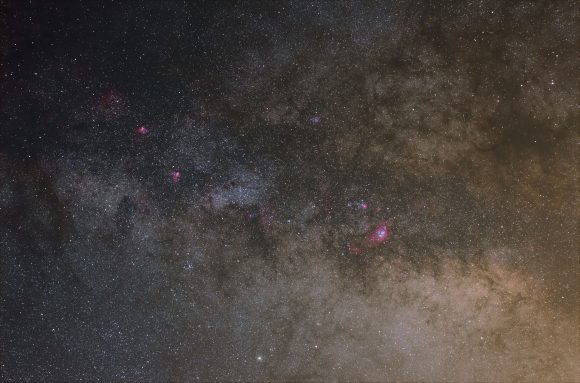
While William Herschel did not publish his observations of Messier’s objects, he was still an avid observer. So of course, he had to look at this cluster, and wrote the following observations in his personal notes:
“A cluster of beautiful scattered, large stars, nearly of equal magnitudes (visible in my finder), it extends much farther than the field of the telescope will take in, and in the finder seems to be a nebula of a lengthened form extending to about half a degree.”
In July of 1835, Admiral Smyth would make an observation of Messier 23 and once again add his colorful remarks to the timeline:
“A loose cluster in the space between Ophiuchus’s left leg and the bow of Sagittarius. This is an elegant sprinkling of telescopic stars over the whole field, under a moderate magnifying power; the most clustering portion is oblique, in the direction sp to nf [south preceding to north following, SW to NE], with a 7th-magnitude star in the latter portion. The place registered it that of a neat pair, of the 9th and 10th magnitudes, of a lilac hue, and about 12″ apart. This object was discovered by Messier 1764, and it precedes a rich out-cropping of the Milky Way. The place is gained by differentiating the cluster with Mu Sagittarii, from which it bears north-west, distant about 5 deg, the spot being directed to by a line from Sigma on the shoulder, through Mu at the tip of the bow.”
Remember when observing Messier 23 that it won’t slap you in the face like many objects. Basically, it looks like a stellar scattering of freckles across the face of the sky when fully-resolved. It’s actually one of those objects that’s better to view with binoculars and low power telescopes.
Locating Messier 23:
M23 can be easily found with binoculars about a finger’s width north and two finger widths west of Mu Sagittarii. Or, simply draw a mental line between the top star in the teapot lid (Lambda) and Xi Serpentis. You’ll find a slight compression in the star field about halfway between these two stars that shows up as an open cluster with binoculars.
Using a finderscope, the object will appear nicely as a hazy spot. And for those using telescopes of any size, you’ll need to use fairly low magnification to help set this cluster apart from the surrounding star field, and it will resolve well to almost all instruments.
And here are the quick facts on this object to help you get started:
Object Name: Messier 23
Alternative Designations: M23, NGC 6494
Object Type: Open Star Cluster
Constellation: Sagittarius
Right Ascension: 17 : 56.8 (h:m)
Declination: -19 : 01 (deg:m)
Distance: 2.15 (kly)
Visual Brightness: 6.9 (mag)
Apparent Dimension: 27.0 (arc min)
We have written many interesting articles about Messier Objects here at Universe Today. Here’s Tammy Plotner’s Introduction to the Messier Objects, , M1 – The Crab Nebula, M8 – The Lagoon Nebula, and David Dickison’s articles on the 2013 and 2014 Messier Marathons.
Be to sure to check out our complete Messier Catalog. And for more information, check out the SEDS Messier Database.
Sources:

